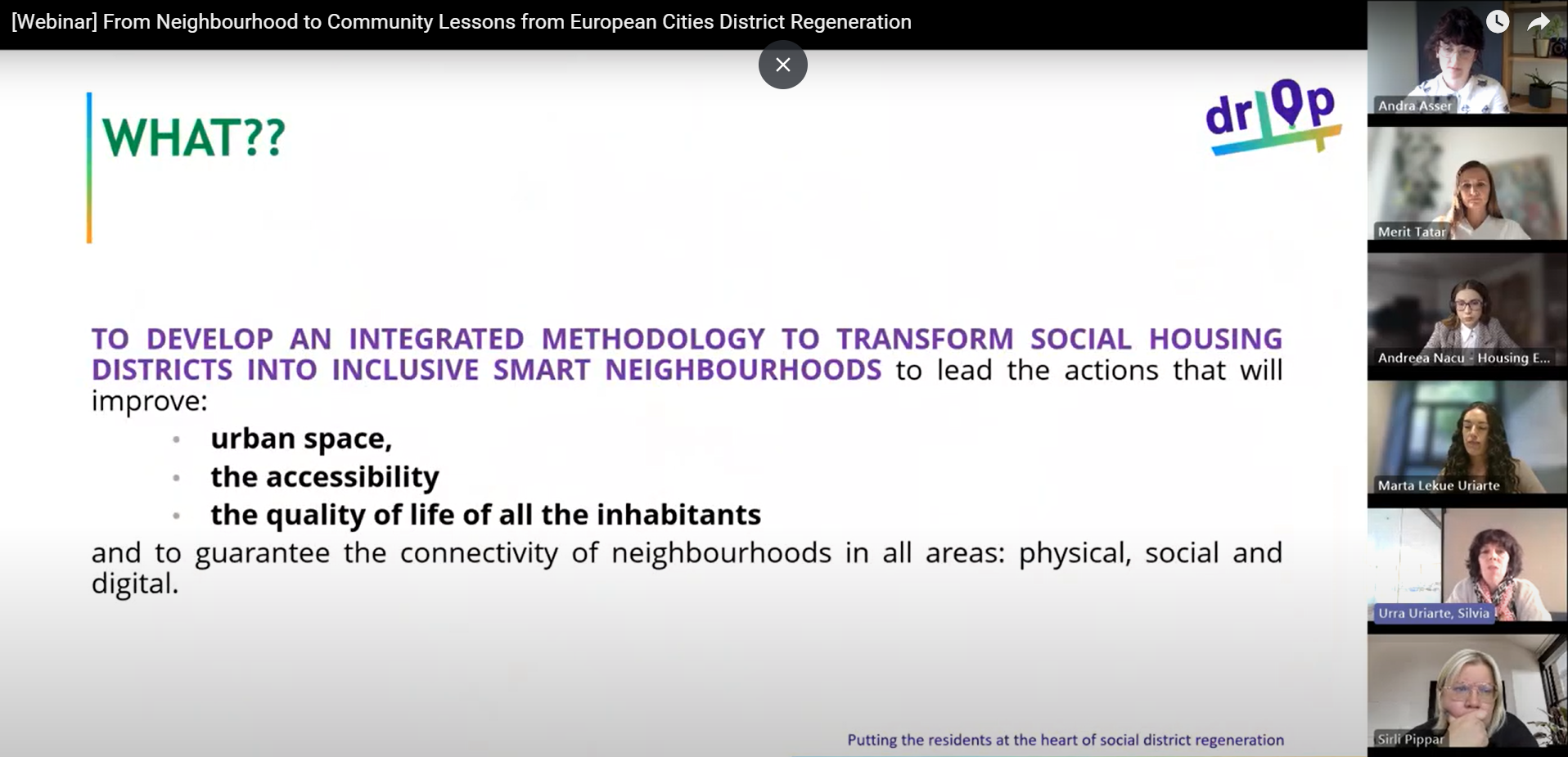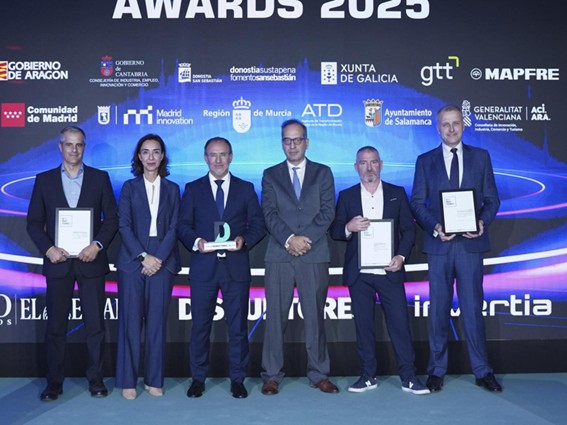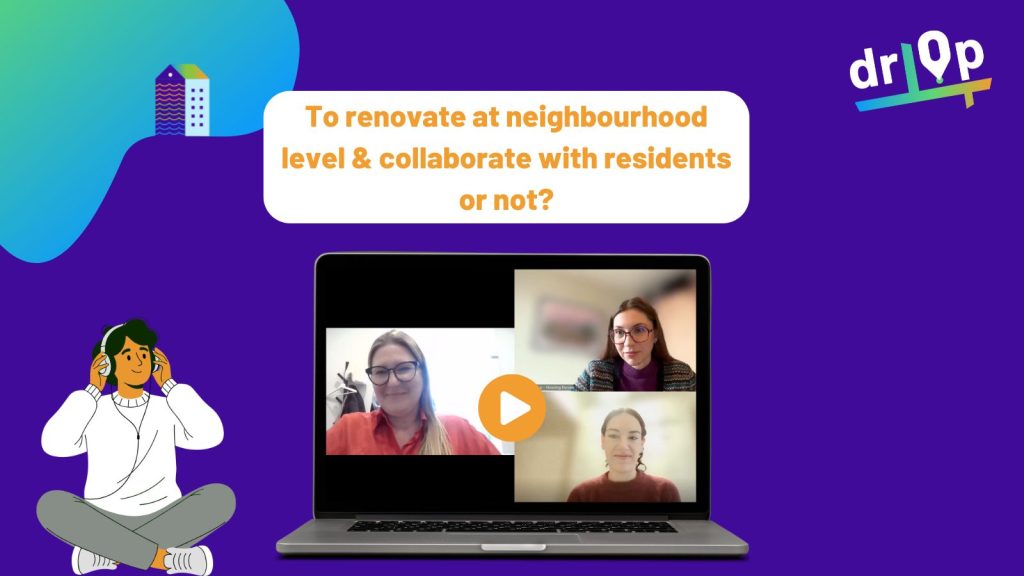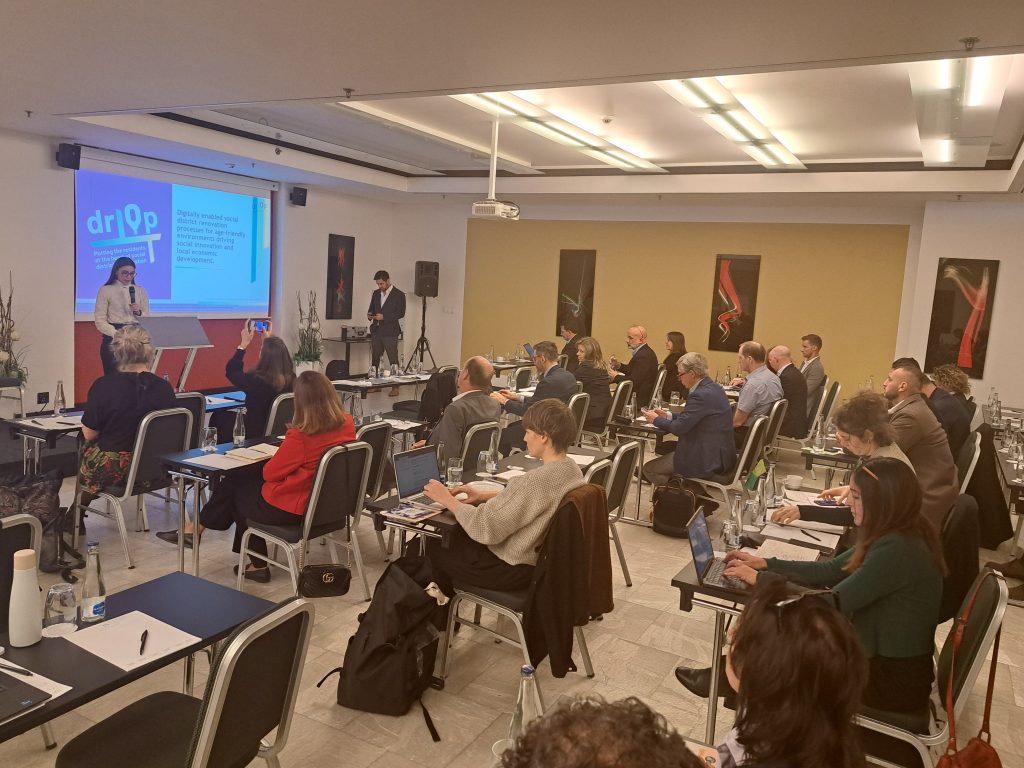On 23 September 2025, the drOp project hosted its fith webinar, “From Neighbourhood to Community: Lessons from European Cities District Regeneration.” The session brought together partners and cities to reflect on three years of work and, most importantly, to discuss how these lessons can be replicated across Europe.
Why replication matters
Opening the event, Andreea Nacu (Housing Europe) underlined that drOp’s mission is to help neighbourhoods — often built decades ago — transform into inclusive, sustainable, accessible, and connected places. Pilots are inspiring, she noted, but for real impact, their methods must be adapted and scaled in different contexts.
The Integrated Renovation Methodology (IRM)
Silvia Urra (Tecnalia) presented the project’s conceptual backbone: the Integrated Renovation Methodology (IRM). Designed as a co-creation process, IRM combines social innovation, local economic development, housing renovation, and energy communities. Its three levels — strategic, design, and intervention — guide cities from diagnosis and visioning to action planning and implementation.
Ermua: Santa Ana neighbourhood
Marta Lekue (Municipality of Ermua) shared how the Basque town piloted IRM in the Santa Ana neighbourhood, built in the 1960s–70s. Residents co-created a Neighbourhood Vision 2035 and implemented actions such as:
- A Neighbourhood Office as a hub for information and participation.
- A Mapathon to identify local issues and opportunities.
- Tactical urbanism to test new uses of public space.
- A community-designed mural celebrating local identity.
- An Energy Community bringing together residents, businesses, and schools.
More than 130 people were directly involved, leading to tangible urban improvements and a stronger sense of belonging and participation.
Elva: Nooruse neighbourhood
From Estonia, Sirli Pippar (Elva Municipality) presented the regeneration of Nooruse neighbourhood. Starting from poor physical conditions, Elva engaged residents through workshops and co-creation, building trust step by step. Adaptations were essential: simplifying governance tools, focusing on small visible changes, and prioritising face-to-face engagement. By the end, residents had developed a Community Action Plan, a spatial plan, and even proposed a project for the participatory budget.
Replication roadmap
Finally, Andra Asser (Institute of Baltic Studies) introduced the Replication Roadmap. Rather than a technical report, it is a practical guide for municipalities, including methodologies, case studies, and lessons learned. Key insights include:
- The importance of combining data with a “personal touch” in neighbourhood analysis.
- The value of a local hub such as a Neighbourhood Office.
- Simplification as a way to increase participation.
- The role of trusted community figures as “anchors” for engagement.
Looking ahead
The session concluded with a strong message: replication is not copying, but adapting. Each city has its own history, culture, and challenges — but with the right tools, the lessons of drOp can inspire transformation well beyond the pilot sites.
The Replication Roadmap will soon be published and made available on the drOp website.
In the meantime, we invite you to watch the recording, study the presentations, and ask our speakers questions⚡





